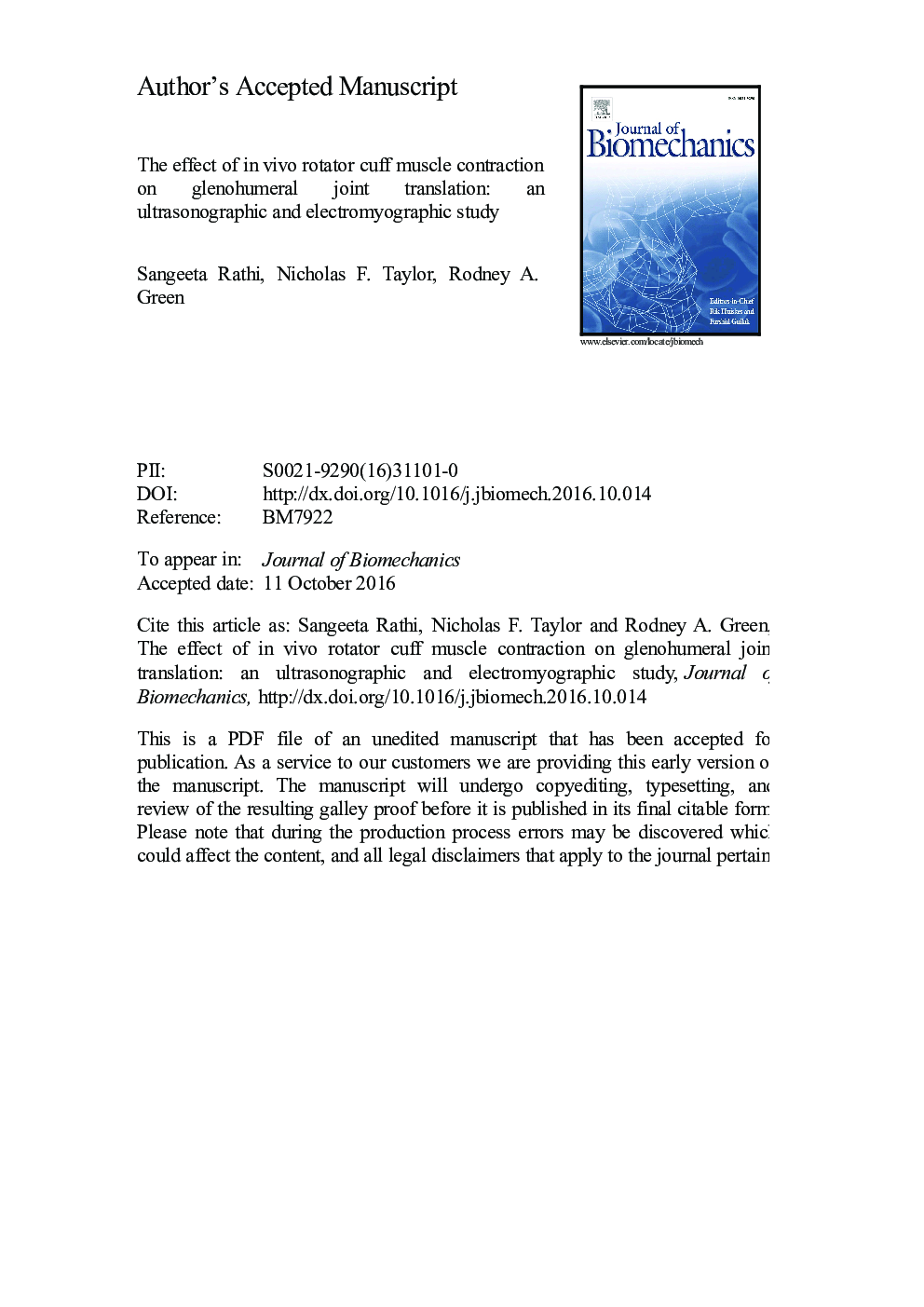| Article ID | Journal | Published Year | Pages | File Type |
|---|---|---|---|---|
| 5032282 | Journal of Biomechanics | 2016 | 35 Pages |
Abstract
The proposed stabilizing mechanism of rotator cuff muscles is to limit excessive humeral head translation. However, an accurate measurement of glenohumeral joint translation in vivo has been challenging. We aimed to measure the effect of rotator cuff muscle contraction on glenohumeral joint translation using real time ultrasound (RTUS) and electromyography. Twenty healthy adults with no history of shoulder pathology were recruited. Six intramuscular electrodes were inserted in the rotator cuff muscles (supraspinatus, upper and lower infraspinatus, teres minor, upper and lower subscapularis). Anterior and posterior glenohumeral translations were measured in testing conditions (with and without translation force, with and without isometric internal and external rotation), in two positions (shoulder neutral, abduction) and views (anterior, posterior). There was reduced glenohumeral translation with rotator cuff muscle contraction in the neutral anterior (F2,38=17.8, p<0.01), neutral posterior (F1.6,31.0=44.3, p<0.01) and abducted posterior (F1.5,28.8=5.2, p<0.02) positions. There were also differences between the amount of translation limited by anterior and posterior rotator cuff muscles in response to anterior and posterior translation forces (p<0.05), indicating that their activity was, to a certain extent, direction specific. For example, in both neutral and abducted positions, contraction of the posterior rotator cuff muscles, infraspinatus and teres minor, appeared to tether anterior translation of the humeral head. Our results confirm that the rotator cuff functions as a stabilizer of the glenohumeral joint by limiting humeral head translation and this is likely to be in a direction-specific manner.
Related Topics
Physical Sciences and Engineering
Engineering
Biomedical Engineering
Authors
Sangeeta Rathi, Nicholas F. Taylor, Rodney A. Green,
